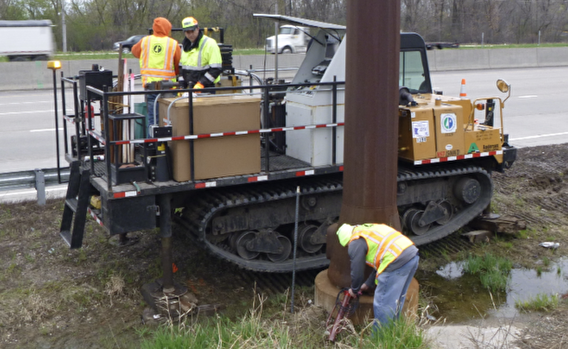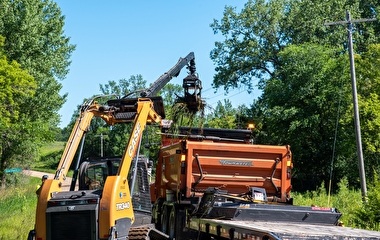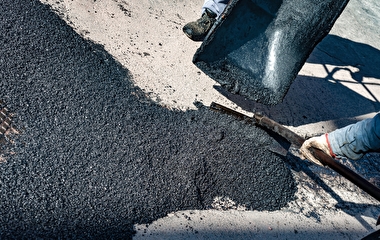
Tall, thin steel poles with lights at the top—known as high-mast light towers (HMLT)—illuminate and increase visibility at high-activity areas such as freeways, intersections, and airports throughout Minnesota. However, several hundred of these HMLTs lack documentation on their foundation systems—leaving state transportation officials in the dark as to whether they could withstand peak wind loads.
To address this challenge, U of M researchers developed a new method to detect underground foundation pile depths. This may allow the Minnesota Department of Transportation (MnDOT) to avoid costly retrofits or replacements and help prioritize light towers in need of redesign.
“Whether a light mast’s foundation meets current specifications depends on the depth of its foundation piles,” explains Bojan Guzina, a professor with the Department of Civil, Environmental and Geo- Engineering and the study’s principal investigator. “Our goal was to develop a nondestructive testing method, including hardware and offline data analysis, to determine in-place pile lengths and help MnDOT effectively prioritize which HMLTs need attention.”
The research team devised a field technique that would sense the length of the pile and allow engineers to understand the structure, geometry, and dimensions of each HMLT foundation. Their multi-pronged approach uses two mechanical vibratory techniques: a steady-state vibration from a pneumatic piston shaker and a single-hammer impact on a mounting plate.
The foundation pile transmits the vibrations (seismic waves) to the bottom of the pile while also radiating the seismic waves into the surrounding soil; the wave data is then picked up by instrumentation placed close to the pile.
The team designed sets of algorithms to interpret the data as it related to pile depth and ran thousands of model simulations. Finally, the team tested the sensing system at multiple HMLT foundations in the Twin Cities area over 15 months.
“It has been a challenge to monitor high-mast light towers to ensure current design standards are met, but successful field testing and an in-depth analysis resulted in a very useful and cost-effective tool,” says Rich Lamb, a foundations engineer with MnDOT’s Office of Materials and Road Research.
Researchers also developed cost savings calculations for this new tool and found that it could result in millions of dollars in savings for the state. “While our method may seem costly—$5,000 to analyze an individual tower—it has the potential to save Minnesota taxpayers up to $8 million, as it costs approximately $40,000 to replace an HMLT foundation,” Guzina says.
Based on the success of these findings, MnDOT is considering a pilot program to use this sensing method on undocumented HMLTs and prioritize which ones need attention.
Writer: Megan Tsai


